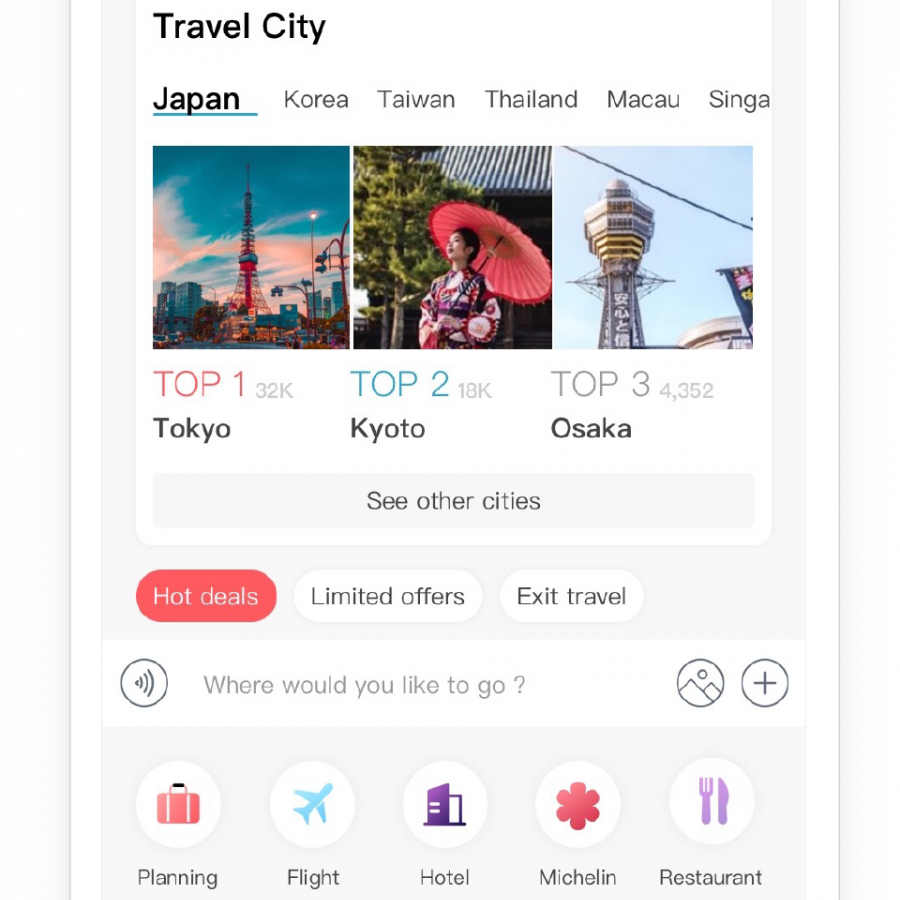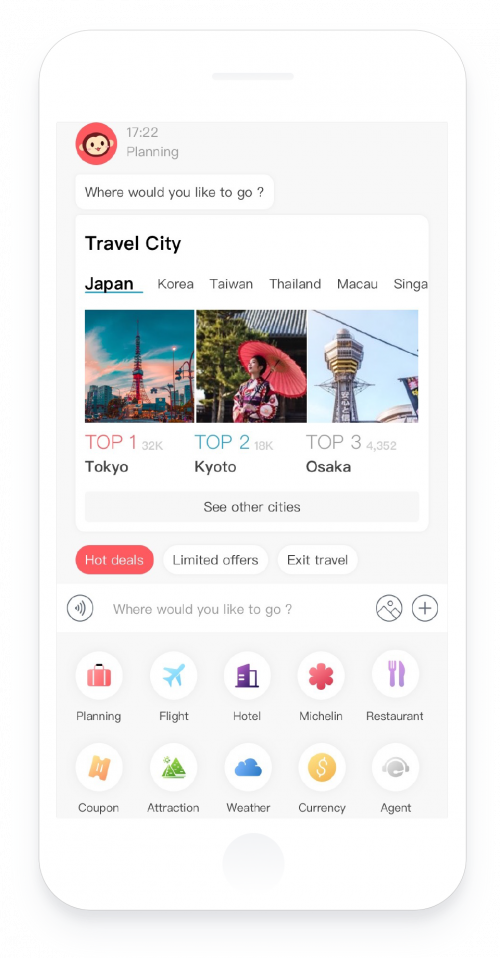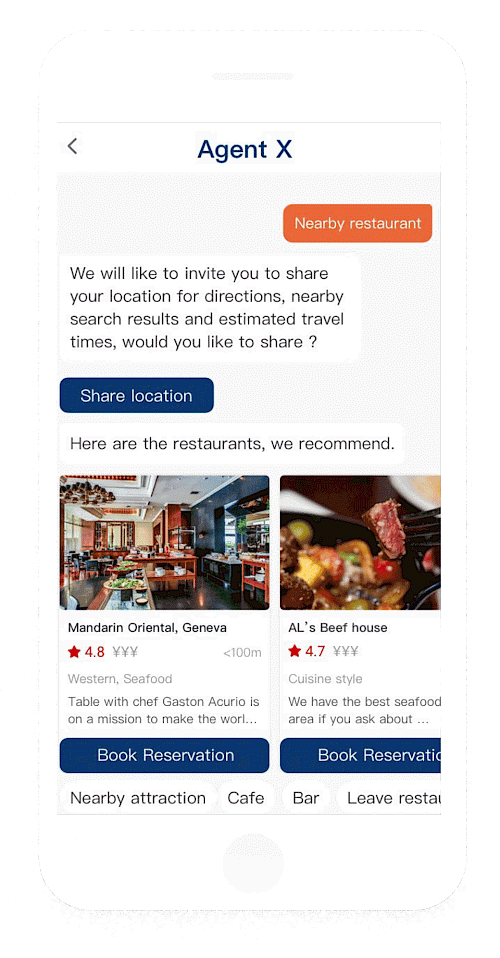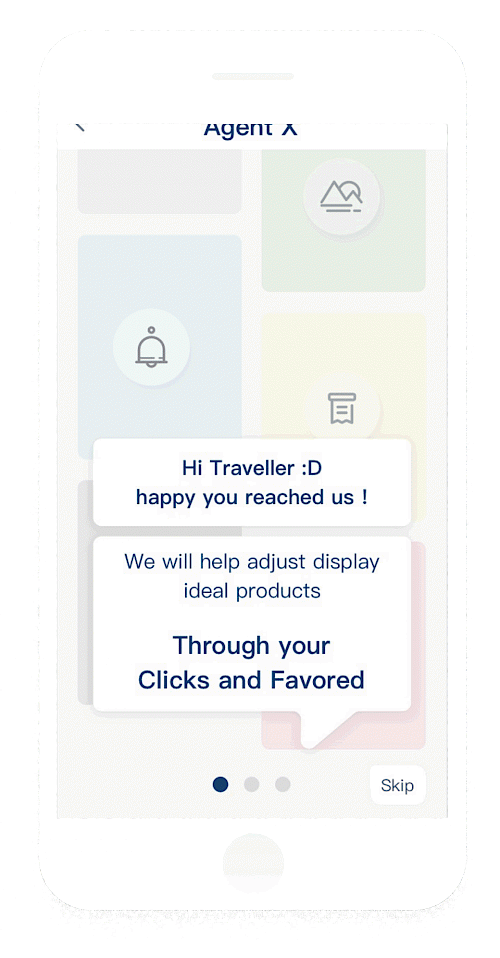How might we...
...make users feel confident that providing their data will support their needs?
Founded in 2015, TravelFlan is an award winning travel and lifestyle AI startup with bases in Hong Kong and Shanghai. They joined the TTC Design Jam for Notice and Consent in Singapore in mid 2020. Artificial Technology (AI), Big Data and Machine Learning technologies are used to provide end-2-end digital solutions.
They operate across the APAC region and have already signed important partnerships with major players in the travel and lifestyle industry.

TravelFlan enriches and expands their partners’ service scope and level by building consumer facing digital platforms that combine vendor resources, inventory management, and AI recommendation systems into one solution. Their signature AI Digital Solutions including Travel Concierge Chatbot and inventory management consolidator effectively increase revenue streams and improves customer engagement through multiple digital channels like social media platforms, official websites, mobile apps and so on.

The TravelFlan team focused on the challenges of user confidence and data transparency. Their aim was to “[...] trying to help Alison feel confident, when she travels, so we can achieve information supporting her needs by accessing her data.”
How might we...
...make users feel confident that providing their data will support their needs?
TravelFlan is a B2B2C business that helps communication between its clients and their customers. TravelFlan’s clients might be anyone from the travel industry. From aviation companies to hotels, from travel attractions to restaurants. Their Travel Concierge Chatbot allows users to acquire the latest and most relevant travel recommendations and experiences anytime, anywhere. The suggestions are based on the customers’ travel information. As such, sensitive privacy data may pass through TravelFlan servers without the end users being fully and explicitly aware of how these suggestions are inferred.
For the purpose of this Design Jam, TravelFlan chose to focus on helping their end users – a member of the public who travels and needs to make a booking (i.e. flight) or reservation (i.e. restaurant) during their journey – as opposed to the business user who is the service provider (i.e. flight company).
TravelFlan created two personas: Alison who is a Senior international trading manager for her company and often travels to meet clients across the globe, has a high level of privacy awareness. And, Johnason, who is a Senior programmer, has a great understanding of technology and privacy. For this he disagrees with the default sharing setting. He wants to have ownership across data usage and access.
“Data privacy is important, but so is efficiency, so a good platform will keep it safe and smart” (Alison)
“Data is key to everything, you do not know what people are planning to do with your phone number or the camera on your phone” (Johnason)
The team decided to focus on Alison’s needs by prompting tailored suggestions while maintaining a high level of security around privacy. Design improvements around consent involved asking permission to use data. Alison would be prompted with accurate and effective recommendations. By doing so, the challenges relate to having a transparent and clear way of asking for data permission and how these were used to make recommendations - for example, making explicit the data that was used to make a recommendation.
TravelFlan defined the following ‘How might we’ questions to address transparency of data: How might we increase user retention by displaying product recommendations based on user browsing history and purchasing decisions?
TravelFlan collects two types of data: personal data (end user) and service data (end user and business user).
Personal data includes such things as:
Service data relates to the interaction of the end user with the business user, for example

Walk-Through Data Usage The welcome page is the first point of interaction for the user. Here the user is immediately asked what the purpose of their journey is. TravelFlan has improved the user experience with a walk-through style tutorial that highlights the main reasoning and benefits of allowing data collection and usage.
Address the purpose This feature sits across the entire product and it is related to the use of language to make explicit the reason behind data sharing. Permission is asked in a humanised way and it is always accompanied with an explanation of the benefit of doing so.
Reveal the shortcuts Transparency and clarity are the main values when there is privacy at stake. TravelFlan wants to improve the experience by enabling a clear communication channel with its users. When forms are prefilled, the user can see how that information was obtained. The user can also decide to further allow data to be imported, change the pre-filled information or continue adding other information.
This is a Walk-through introduction for first time users. Here it is shared with the purpose to inform the end-user which data will be collected and how it will be used.
This is the interaction between the end user and the chatbox. Highlights are around the use of a more human language by asking a question rather than, for example, having ‘share location’ already active as default. The end-users are in control of their data.
Another important aspect is to acknowledge the use and origin of data. Sometimes pre-filled forms are presented to users who may question how that information was gathered. For example, users may have forgotten they consented to the use of their data. To establish a trustworthy and transparent relationship the user is shown a message regarding the origin of the data.
